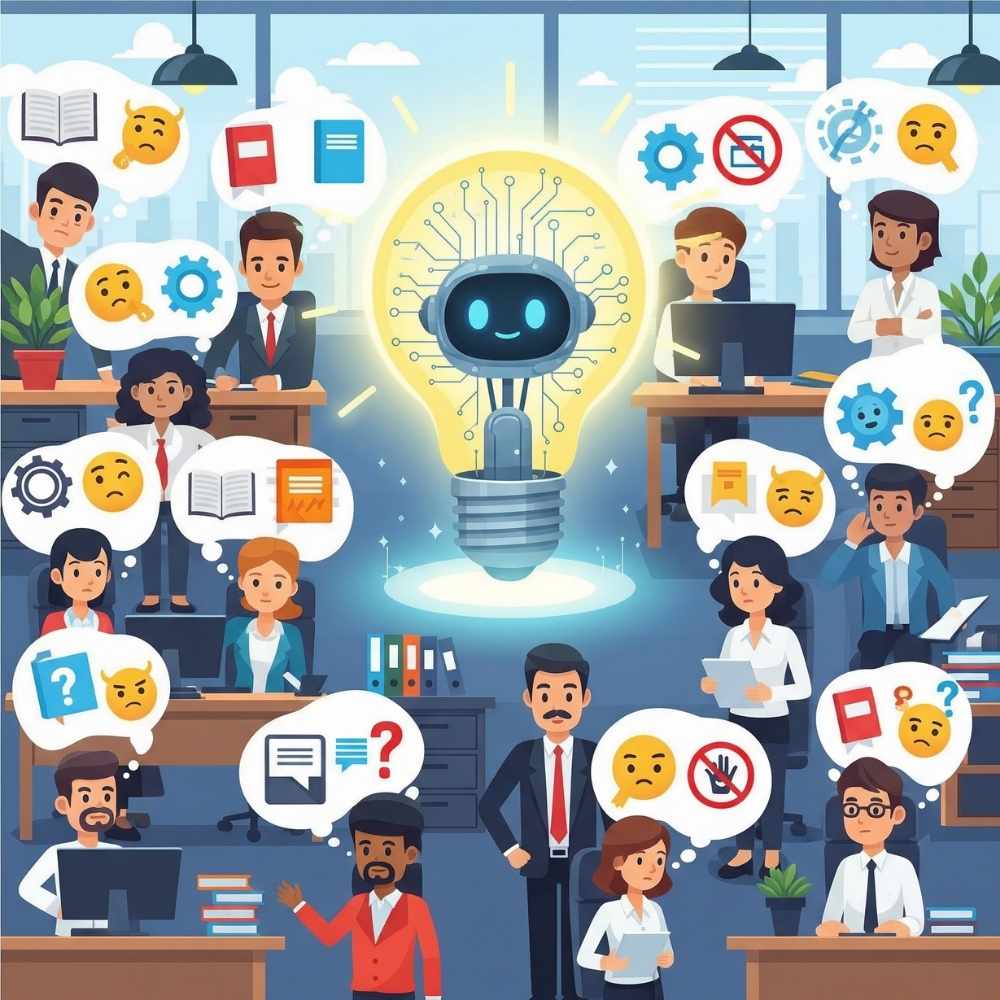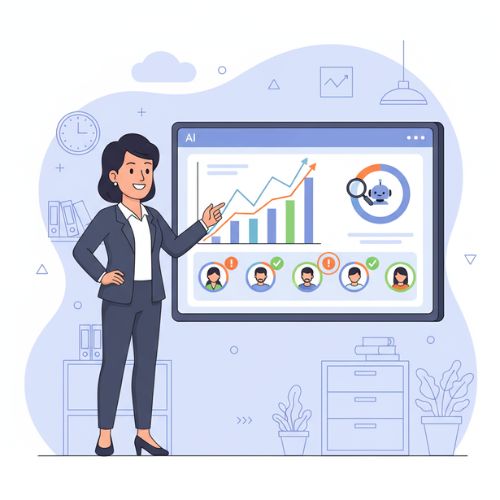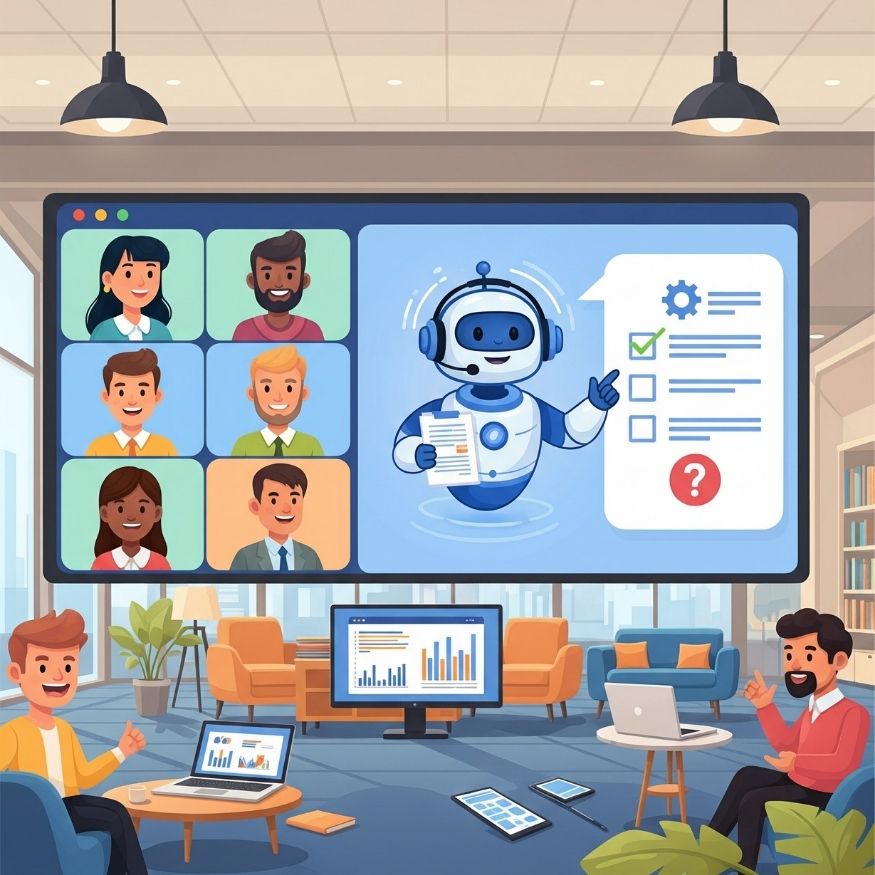How AI Spots HR Policy Gaps Through Employee Queries
Imagine an HR team buried under a pile of emails and Teams messages from employees asking the same questions about vacation time or remote work rules. These repeated inquiries often point to bigger issues, like unclear guidelines or outdated handbooks. What if there were a way to turn those questions into actionable insights? That's where AI chatbots come in, helping HR professionals identify and fix policy gaps by analyzing what employees are searching for.
In this post, we'll explore how AI tools can track employee queries, reveal hidden confusion points, and support better decision-making in human resources. Whether you're dealing with compliance challenges or aiming to improve training, these insights can make a real difference.
What Are Policy Gaps and Why Do They Matter?
Policy gaps occur when company rules fail to fully address employee needs or when the language is ambiguous, leaving room for misunderstanding. For example, a handbook might outline parental leave but skip details on how it interacts with other benefits. These oversights can lead to frustration, lower morale, and even legal risks if not handled well.
This kind of uncertainty can snowball, affecting everything from daily operations to retention rates. HR teams in areas like compliance often spend hours fielding these questions, pulling focus from strategic work.
The good news? Spotting these gaps early can prevent bigger headaches. By understanding what employees are confused about, organizations can update documents, create targeted training, and foster a more supportive environment.

How Chatbot Data Can Show Policy Gaps
AI chatbots aren't just for customer service anymore. In HR, they act as virtual assistants, answering questions about policies, benefits, and procedures in real time. Tools integrated into platforms like Slack or Microsoft Teams let employees ask things like "What's our policy on overtime?" without waiting for an email response.
But the real value goes beyond quick answers. These chatbots log interactions, creating a treasure trove of data on what employees look up most. This tracking happens anonymously, focusing on trends rather than individual users. For instance, if multiple queries pop up about data privacy rules, it might signal a need for clearer guidelines in information technology policies.
We've covered similar ideas in our post on AI chatbots used in human resources, where we discuss how these tools streamline everyday tasks.
Example Scenarios
These two scenarios are examples of how HR teams can use metrics from chatbots to find holes in their training or policies.
Company A
Company A implemented an HR chatbot last year in October. After 6 months of running the chatbot, there is some data provided that might be interesting.
Data from an internal HR Chatbot might look something like this:
This logging happens in a centralized database, where interactions are stored securely. AI chatbots keep track of every interaction in such a database, allowing for personalized help over time.
What can we determine from the data? Maybe there needs to be clearer communication around vacation policies since there is a significant amount of questions regarding that topic. The HR representative can then ask the chatbot for more specifics as to what people are confused about and structure training around those gaps.
Company B
In January 2025, Company B launched an HR chatbot. After six months, they reviewed 600 queries to gain insights into employee needs. The data highlighted a clear trend:
The standout was benefits enrollment, with 147 queries—nearly a quarter of the total. This suggested that Company B’s benefits documentation was either unclear or difficult to find. By diving into the chatbot’s secure database, HR discovered confusion around enrollment deadlines, plan options, and eligibility criteria. This led to a rewrite of their employee benefits guides and targeted support sessions during open enrollment.
How It Works
When an employee asks, “How do I sign up for benefits?” the chatbot pulls answers from internal resources like employee handbooks. It logs the topic anonymously, respecting privacy standards like GDPR. AI then analyzes these logs to spot patterns, which are visualized in dashboards for HR teams. The spike in benefits queries at Company B flagged a need for clearer communication. This approach helps HR, compliance, and information technology teams refine processes and boost employee satisfaction.
For more on how AI chatbots streamline HR, read our blog post. Interested in quality assurance or compliance? Check out our insights on quality assurance.
How Queries Provide Insights
Picture this: an employee types a quick question into a chatbot about their company's remote work rules. The bot responds right away, pulling from internal documents. But behind that simple exchange, something powerful is happening. AI chatbots don't just answer queries; they are keeping track of what questions are being asked to help HR teams spot patterns and improve policies. This process turns everyday questions into useful data, supporting better decisions in areas like human resources and compliance.
Data collection starts when an employee interacts with the chatbot. These tools, often built into platforms like Slack or Microsoft Teams, use natural language processing (NLP) to understand the question. For example, if someone asks, "How do I request time off?" the bot interprets it and fetches the answer from a knowledge base of policies and handbooks. At the same time, it logs key details: the topic, time, and general context, all without linking back to the individual's identity for privacy reasons.
Next comes analysis
AI algorithms sift through the logged queries to identify patterns. If questions about benefits spike during open enrollment, that might highlight unclear guidelines. Tools can categorize queries by department, like information technology policies or quality assurance procedures. Dashboards then visualize this data, showing top topics, frequency over time, and even sentiment. For instance, chatbots collect interaction data for insights into common queries and training needs.
HR teams use these insights to act. A surge in queries about conflict resolution could lead to updated training or clearer docs. This loop not only cuts down on repeated questions but also boosts employee satisfaction by addressing confusion early.
Of course, ethics matter. Strong privacy controls ensure data is used responsibly, building trust. We've touched on similar ideas in our post about using AI for compliance.
In short, tracking employee queries with AI chatbots is a straightforward yet impactful way to refine internal processes. It starts with logging interactions, moves to smart analysis, and ends with real improvements.
Spotting Trends and Gaining Insights
The magic happens when AI analyzes these queries for trends. Suppose your team notices a surge in questions about remote work setups. That might reveal a gap in your flexible policy, prompting a review and update. Or, in quality assurance, repeated asks about inspection protocols could highlight areas needing more detail.
Case studies back this up. For example, companies using AI in HR have seen improvements in compliance by automating policy tracking. A Prismetric report on AI in HR notes how these tools ensure policies align with regulations, reducing risks.
These insights also help with proactive changes. If queries about employee benefits rise during open enrollment, HR can roll out FAQs or webinars ahead of time.
.jpg)
Real-World Benefits for HR Teams
Putting this into practice brings tangible perks. HR spends less time on repetitive questions, freeing up space for things like talent development. Employees get faster, accurate answers, which boosts satisfaction.
Research from IBM on the business case for AI in HR highlights how AI transforms HR contributions, from cutting costs to improving engagement.
Another study in the PMC journal highlights benefits such as automating tasks and enhancing satisfaction.
In our experience at Botable.ai, clients in human resources have used these features to refine their approaches, leading to smoother operations.
Addressing Privacy and Ethical Concerns
Of course, tracking queries raises questions about privacy. Good AI tools anonymize data, ensuring no one's identity is linked to their questions. Compliance with standards like GDPR is key, and features should let employees opt out if needed.
We dive deeper into this in our using AI for compliance post. The goal is to build trust, not invade personal space.
Taking the Next Step
AI chatbots offer a way for HR to uncover policy gaps through employee queries, turning potential problems into opportunities for improvement. By focusing on trends and insights, teams can create more straightforward, more effective guidelines that support everyone.
Ready to see how this works for your organization? Discover our solutions for human resources and explore related topics, such as employee self-service technology.
Answers your employees need, right when they need them
Meet Botable — the AI chatbot that handles everything from simple FAQs to complex, multi-step questions, so your team can focus on what matters. Built for HR, QA, and beyond.
Continue reading
Ready to see what Botable can do for you?
Book your demo now to see how Botable can transform your workplace.
Identify your unique challenges
Flexible pricing options
Easy integrations
Step-by-step implementation plan
Customize Botable for your workflow
Book a demo
.webp)



.jpg)





